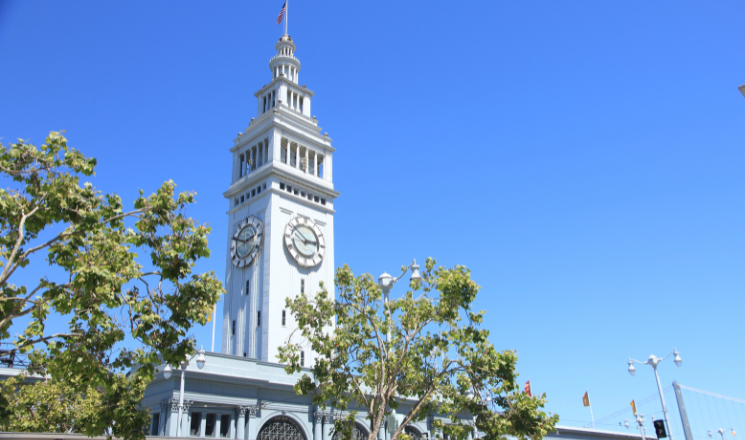Alcatraz Island, located just 1.5 miles off the coast of San Francisco, holds a unique and layered history that spans centuries. Known globally as one of the most notorious federal prisons in American history, Alcatraz’s legacy goes far beyond bars and inmates. Once the location of the first lighthouse on the West Coast, the island later transformed into a high-security penitentiary that housed some of the most infamous criminals in the country. Today, it stands as a top-tier tourist attraction and an essential piece of the Golden Gate National Recreation Area.
In this post, we’ll explore the rich and compelling history of Alcatraz—from its origins to its legacy as a national landmark. Whether you’re a history buff, a true crime enthusiast, or planning your visit to San Francisco, this guide offers everything you need to know about the “Rock.”
The Origins of Alcatraz: A Beacon in the Bay
A Lighthouse and Strategic Outpost
Long before it became a prison, Alcatraz played a significant role in maritime history. In 1854, the island became home to the first lighthouse on the West Coast of the United States, guiding ships through the foggy and treacherous waters of San Francisco Bay.
Because of its strategic location and natural isolation, Alcatraz was also used as a military fortification during the 19th century. In the 1850s, it was developed by the U.S. Army as part of a network of coastal defenses. Artillery and military barracks were added to reinforce its role as a coastal guardian.
From Fortress to Military Prison
By the late 1800s, the focus of Alcatraz shifted from military defense to incarceration. The U.S. Army began using the island to hold military prisoners, including Civil War deserters and Native American captives. The facility was formally designated as a military prison in 1907, setting the stage for what would come next: its transformation into a high-security federal penitentiary.
Alcatraz as a Federal Penitentiary (1934–1963)
America’s Toughest Prison
In 1934, the U.S. Department of Justice took over Alcatraz and converted it into a maximum-security, minimum-privilege federal prison. The goal was to house the most dangerous and disruptive prisoners in the federal system—those deemed too difficult to manage elsewhere.
With its location on a rocky island surrounded by frigid, fast-moving currents, escape from Alcatraz seemed nearly impossible. This isolation was a key reason it was selected for housing high-risk inmates.
Notorious Inmates of Alcatraz
Alcatraz’s reputation quickly grew as it became home to some of the most infamous criminals of the 20th century. Among the most notable were:
- Al Capone – The infamous Chicago mob boss, convicted of tax evasion, spent four and a half years on Alcatraz.
- George “Machine Gun” Kelly – A prohibition-era gangster known for bootlegging, bank robbery, and kidnapping.
- Robert Stroud, the “Birdman of Alcatraz” – A convicted murderer whose interest in ornithology led to his nickname, though he did not actually keep birds on the island.
- Alvin “Creepy” Karpis – Public Enemy No. 1 and a member of the Ma Barker gang, Karpis served more time on Alcatraz than any other inmate.
Daily Life Behind Bars
Inmates at Alcatraz experienced a highly controlled and regimented lifestyle. The cellblocks were intentionally stark and isolating. Cells measured just 5 feet by 9 feet, furnished only with a cot, toilet, and small sink. There was no privacy, and rules were strictly enforced.
Privileges—such as working in the laundry or kitchen, receiving mail, or having library access—had to be earned through good behavior. The island had a mess hall, a recreation yard, and even a prison library, but all interactions were closely monitored.
One of the most feared punishments was being sent to “The Hole”, solitary confinement cells located in the deepest, darkest parts of the cellhouse. These small, windowless chambers were used for the most unruly inmates, often leaving them in total darkness for days.
The Myth and Reality of Escape Attempts
The Great Escape of 1962
Over its 29 years as a federal prison, 36 inmates attempted to escape in 14 separate incidents. Most were caught or drowned—except for the most legendary escape in June 1962, when Frank Morris and brothers John and Clarence Anglin vanished from their cells.
Using makeshift tools, they dug through the back of their cells and climbed to the roof via utility corridors. They created dummy heads from soap, toilet paper, and hair to fool guards during bed checks. Their raft, constructed from raincoats, was never found, and their bodies were never recovered.
The FBI closed the case in 1979, declaring them presumed drowned—but the mystery remains. The story was later dramatized in the film Escape from Alcatraz starring Clint Eastwood, further embedding the island in pop culture.
Closure and Transition to a National Landmark
Why Alcatraz Closed as a Prison
By 1963, Alcatraz had become too expensive to maintain. The corrosive saltwater, isolation, and logistical challenges made it cost nearly three times more per prisoner than other federal institutions. Additionally, public sentiment was shifting toward prison reform.
The last group of prisoners was transferred off the island on March 21, 1963, marking the end of an era. The buildings were left abandoned, and the island sat vacant for several years.
Native American Occupation (1969–1971)
In November 1969, a group of Native American activists under the banner Indians of All Tribes occupied the island to reclaim it as Native land. The occupation lasted 19 months and brought national attention to Indigenous rights and federal land policy.
Though the occupation ended in 1971, it left a lasting legacy. Today, signage and graffiti from the occupation are still visible as a reminder of the island’s broader cultural importance.
Alcatraz Today: A Must-See San Francisco Attraction
Part of the Golden Gate National Recreation Area
In 1972, Alcatraz became part of the newly created Golden Gate National Recreation Area (GGNRA), which protects over 80,000 acres of natural and cultural resources in the Bay Area.
Now managed by the National Park Service, Alcatraz Island attracts over 1.5 million visitors annually, making it one of San Francisco’s top destinations.
What to Expect During Your Visit
Visiting Alcatraz is more than just a walk through a prison—it’s a powerful journey into history, architecture, and human resilience.
Ferry Ride and Arrival
Departing from Pier 33 near Fisherman’s Wharf, the ferry ride to Alcatraz offers spectacular views of the San Francisco skyline, the Golden Gate Bridge, and the bay itself. The ride takes about 15 minutes.
Cellhouse Tour
Upon arrival, the self-guided audio tour titled Doing Time: The Alcatraz Cellhouse Tour is a highlight. Narrated by former guards and inmates, the tour walks you through the main cellblocks, solitary confinement, the mess hall, and the infamous D Block.
Other Attractions
- Warden’s House ruins
- Recreation yard
- Alcatraz Gardens lovingly restored by volunteers
- Exhibits on civil rights and Native American history
- Seasonal events and special exhibitions
Tips for Visitors
- Book tickets early, especially during peak travel seasons.
- Wear comfortable walking shoes—the island has steep paths and uneven surfaces.
- Bring a jacket; weather on the island is cooler and windier than onshore.
- Allow at least 2–3 hours for your visit, including ferry time.
Alcatraz in Popular Culture
From documentaries and novels to blockbuster films and video games, Alcatraz has become a symbol of mystery, punishment, and perseverance. It has appeared in:
- Escape from Alcatraz (1979)
- The Rock (1996)
- Murder in the First (1995)
- Call of Duty: Black Ops II – Mob of the Dead map
This rich cultural relevance continues to draw people who are as fascinated by its myths as its facts.
Conclusion: Why Alcatraz Still Captivates
Alcatraz isn’t just a prison—it’s a window into America’s past, a symbol of justice and resistance, and a monument to stories both grim and inspiring. From its earliest days as a lighthouse to its era as a prison fortress, and now as a historical landmark, Alcatraz has stood as a silent sentinel of San Francisco’s ever-evolving identity.
Whether you’re visiting for the history, the scenery, or the legend, a trip to Alcatraz is a haunting and unforgettable experience that reveals as much about human nature as it does about the city that surrounds it.



